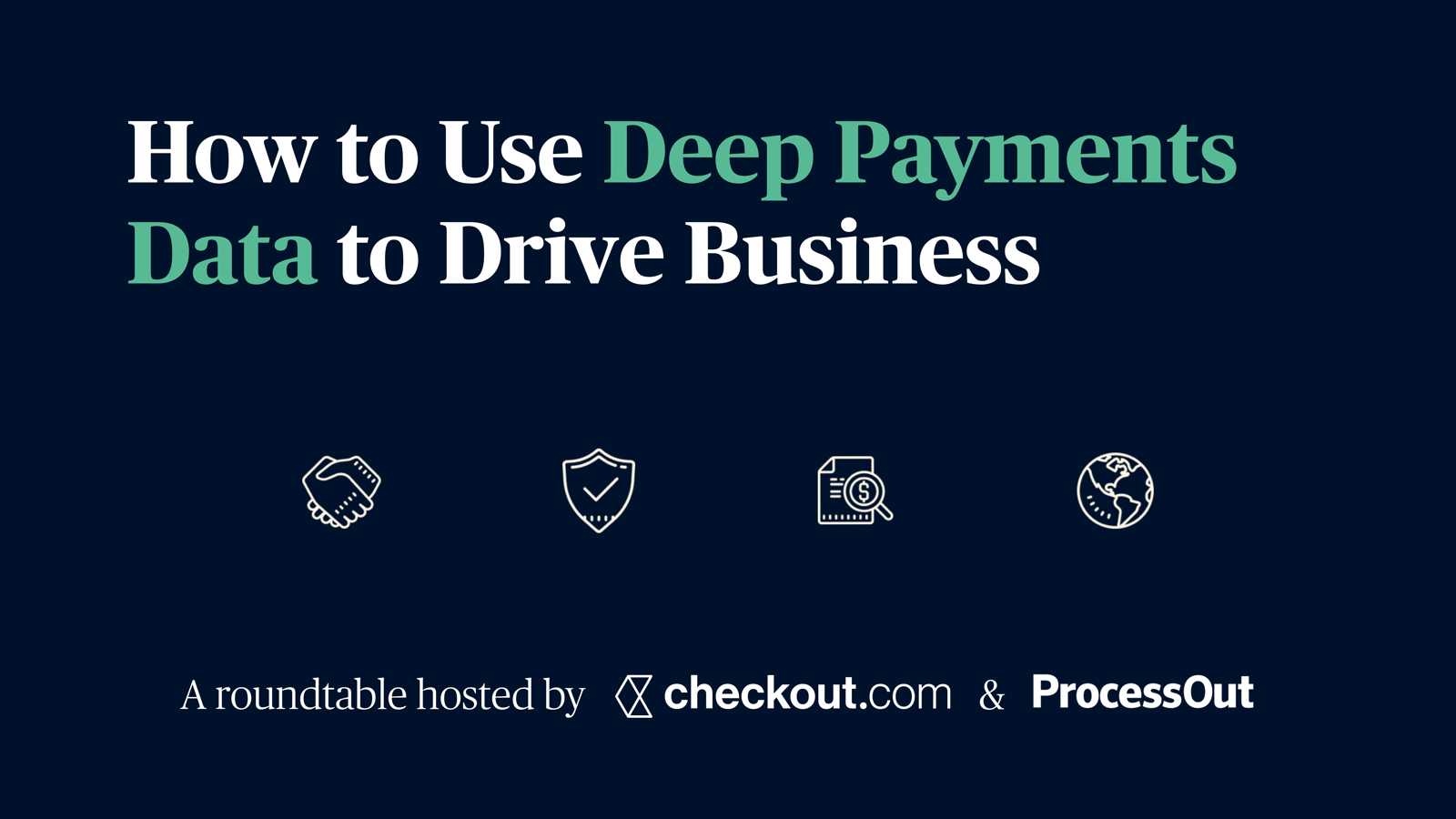How to Use Deep Payments Data to Drive Business: A round table hosted by ProcessOut & Checkout.com
by Matthieu Couet on
Checkout.com and ProcessOut recently opened a discussion with a group of leading French merchants to share best practices about how businesses can leverage deep payment data to drive payment performance and unlock new revenue streams. Below we detail some best practices that emerged from the discussion to help payment beginners identify primary optimization levers.

Payment optimization and efficiency has been an underestimated source of revenue for the past years but is, more than ever, becoming a hot topic for companies dealing with payments.
Payment Acceptance & Checkout Conversion
Payment Acceptance is a function of several parameters, fraud being key:
Optimizing payment acceptance (ratio of transactions that are being accepted by issuing banks) is not always an easy game, as you have to simultaneously keep your fraud and chargeback ratios under control.
It is thus crucial to be able to closely monitor both your overall authorization rate and fraud ratio to track the outputs of your actions. This is where it starts to become more complex: consolidating your global authorization rate can come with lots of challenges if you are operating in several areas or working with multiple Payment Service Providers (PSPs) and Acquirers. You then have the choice to build the systems that will enable you to consolidate and monitor that data internally or to leverage advanced monitoring and reconciliation products.
If you do not have the time or expertise, some tools can help: In the past few years, machine learning and artificial intelligence have brought amazing perspectives on payment performance and optimization. Data science is gaining momentum in the payment industry to help businesses to reach the highest level of payment optimization and to fight against fraud at scale.
Payment Acceptance serves Checkout Conversion:
Checkout Conversion (the ratio of customers who complete the payment flow) is also a key lever to drive revenue. The payment comes at the end of the customer purchase journey and the experience needs to be smooth and tailored.
Best practices
- Analyzing payment flows with a high level of granularity is crucial. The ability to track and monitor each transaction enables you to identify transaction acceptance and decline patterns.
- Combining real-time payment data monitoring with alerting systems helps to quickly identify potential incidents that can come from PSPs, or from authentication servers, and thus to reduce their impact.
- Online businesses increasingly use payment smart routing. Intelligent payment routing consists of routing transactions through the most relevant PSPs and acquirers, thanks to machine learning-based algorithms, to leverage the best capabilities of each.
- On-us transactions (when the bank that issues the card also processes the payment) don’t systematically offer the best performance. That can seem counterintuitive as they have a lot of data on the cardholder, but other parameters come into play. A great approach is to A/B test the performance of on-us transactions versus another acquirer.
- Your reputation with banks is a major component of your authorization rate. The lower your fraud and decline ratios are, the better you will be rated as a merchant in the banks’ eyes. Besides blocking fraudsters as soon as possible in the payment process, carefully managing payment retries is key. If payment retries can help you reach a higher net Authorization rate, too many declines will downgrade you with banks. If you are running a subscription-based business, this may ring a bell. What you want at the end of the day is to know whether you should retry payment or not and if so, how many times (depending on the error code the bank returns, the history of your customer…).
Optimizing costs related to payment & payment fees
The analysis of payment fees (average fees paid on transactions—that can be split per country, per payment method, per acquirer…) has to be balanced by the analysis of authorization rate. When switching from a PSP to another, a slight increase in your authorization rate can easily offset higher fees on transactions. In the same way, the costs associated with payments (such as the technical cost of integrating a new provider) have to be balanced with your KPIs on payment acceptance and checkout conversion.
Payment fees monitoring and optimization often comes as a secondary focus in expanding business geographies. It becomes more strategic after reaching a certain level of maturity.
Best practices
- Local PSPs may offer competitive pricing. They are also likely to provide market knowledge and good connections with local acquiring banks, local schemes, and relevant Alternative Payment Methods (APMs), which often drives good acceptance.
- Some APMs have an important market footprint (such as pay-later payment methods in Germany or ACH payments in the US for example). Those payment methods are therefore a must-have in such markets to increase checkout conversion. Some of these payment methods offer businesses direct integration capabilities (without leveraging a PSP). Depending on your payment volume, it can be worthwhile to assess the return on investment of integrating these payment methods on your own: disintermediation often lowers the price.
- In some markets, local banks agree to reproduce, together, the acceptance patterns of on-us transactions. It brings opportunities for merchants to accept payments from local cards at a competitive price.
We hope this advice and best practices help you identify some payment optimization approaches.
At ProcessOut, we believe that inclusive discussion and debates are a great way to drive better performance in payments, sharing feedback, and leveraging the diversity of experience. If you are facing payment challenges and want to be kept in the loop for our next roundtables and events, feel free to reach us at [email protected].
